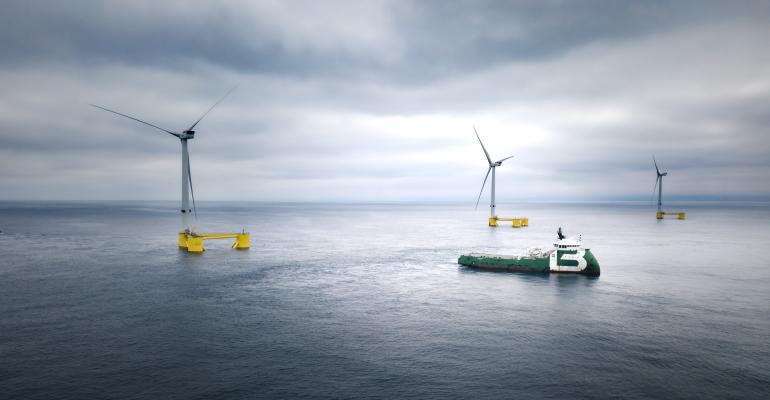A new report from Intelatus Global Partners, an energy consultancy, reveals that as yet there are no purpose-built port facilities to support floating wind farm development in California, a hot spot. A number of possible locations have been identified and the capital investment required is likely to run into billions of dollars.
The report comes soon after the announcement of the first-ever west coast wind lease sale. The floating wind sector is seen as a vital component in supporting California’s aim of transitioning to 90% clean energy by 2035.
Intelatus consultants identify six port functions that are required for the efficient development of floating wind facilities offshore. They include a base for geotechnical surveys; substructure construction facilities, an integration quay where turbines can be mated with substructures; wet storage for floating turbines prior to installation on site; a mooring cable base; and an operations and maintenance facility.
The consultants cite the example of the Port of Long Beach whose Executive Director, Mario Cordero, recently outlined the potential of the offshore floating wind sector during his ‘State of the Port’ address.
The west coast port has not yet been identified as a marshalling port for any specific project. But the conceptual framework for its ‘Pier Wind’ facility, focusing on the design of a staging and integration facility for floating wind turbines and part of the port’s Zero Emissions Energy Resilient Operations Program (ZEERO), is due to be completed in April.
The report also details likely developments at other west coast locations including the Port of San Francisco, Humboldt Bay, Port Hueneme, the Port of Los Angeles, and the Port of Coos Bay.
Copyright © 2024. All rights reserved. Seatrade, a trading name of Informa Markets (UK) Limited.
Add Seatrade Maritime News to your Google News feed.  |
